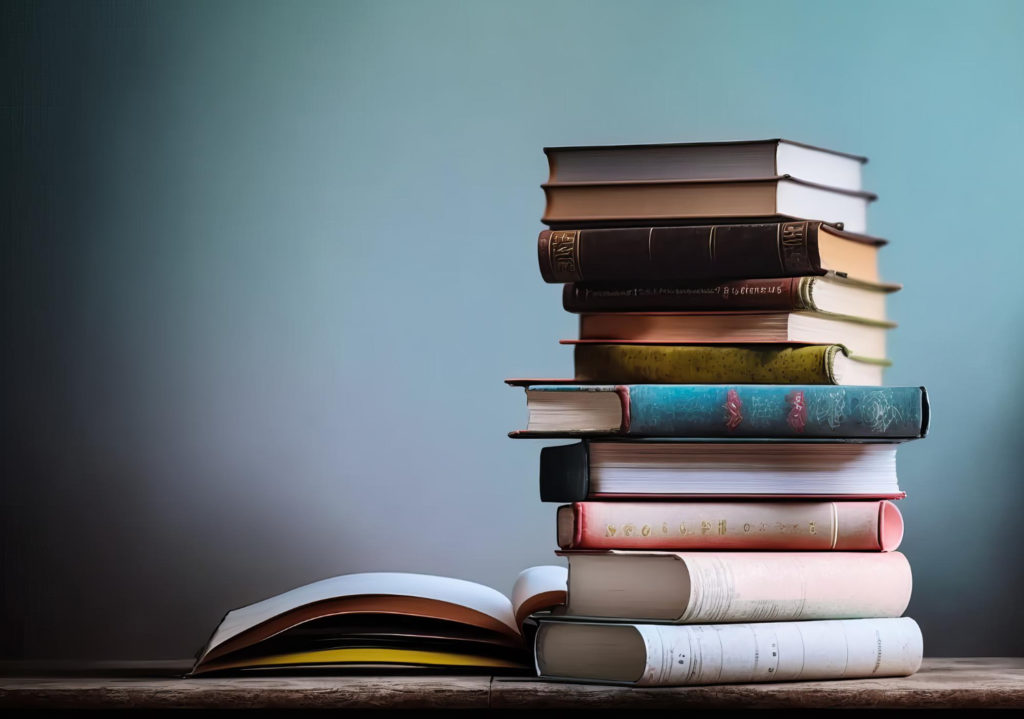Sushruta Samhita Sutrasthana Chapter 41 Dravya Vishesha Vijnaniya Adhyaya (Knowledge of Categories of Drugs)
The 41st chapter of Sutrasthana of Sushruta Samhita is named as Bhumi Dravya Sangrahaniya Adhyaya. This chapter deals with Collection (group) of Drugs.
अथातो द्रव्यविशेषविज्ञानीयमध्यामं व्याख्यास्यामः ॥१॥
यथोवाच भगवान् धन्वन्तरिः ॥२॥
We will now expound the chapter by name Dravya Visesa Vinaniya special knowledge of (categories of) drugs; as revealed b y the venerable Dhanvantari.
Table of Contents
Dravya Utpatti: Genesis of substances
तत्र पृथिव्यप्तेजोवाय्वाकाशानां समुदायात् द्रव्याभिनिर्वृत्तिः, उत्कर्षस्त्वभिव्यञ्जको भवति-इदं पर्थिवमिदमाप्यमिदं तैजसमिदं वायव्यमिदमाकाशीयमीति॥३॥
The combination of the Panca mahabhutas i.e. Prthvi, Jala, Tejas, Vayu and Akasa are responsible for the origin of many substances and herbs. The classification of these substances is made on the basis of predominance of each of these mahabhutas in different substances. Example, predominance of Prthvi or earth element in a substance makes it Parthiv. The same rule applies to the other substances also. Below mentioned is the classification of substances based on their mahabhuta predominance. We call these dravyas as mentioned below –
1. this is parthiva (when prithvi mahabhuta – earth element is predominant in the substance)
2. this is apya (when ap or jala mahabhuta – water element is predominant in the substance)
3. this is taijasa (when teja or agni mahabhuta – fire element is predominant in the substance)
4. this is vayavya (when vayu mahabhuta – air element is predominant in the substance)
5. this is akasiya (when akasa mahabhuta – ether element is predominant in the substance)
Dravya Bheda: Categories of drugs
Qualities of Parthiva Dravya – substances predominant in earth element
तत्र स्थूलसान्द्रमन्दस्थिरगुरुकठिनं गन्धबहुलमीषत्कषायं प्रायशो मधुरमिति पार्थिवं; तत् स्थैर्यबलगौरवसंघातोपचयकरं विशेषतश्चाधोगतिस्वभावामिति॥४(१)॥
Substances which have the below mentioned qualities are said to be Parthiva (predominant of prithvi bhuta or earth element). These substances are –
– gross,
– thick,
– slow / weak,
– stable,
– heavy,
– hard,
– prominent in smell / odour,
– slightly astringent and generally sweet in taste
Benefits – These bestow stability, strength, heaviness, compactness and stoutness; have a tendency of moving downward especially.
Qualities of Apya Dravya: Substances predominant in water element
शीतस्तिमितस्निग्धमन्दगुरुसरसान्द्रमृदुपिच्छिलं रसबहुलमीषत्कषायाम्ललवणं मधुररसप्रायमाप्यं ; तत् स्नेहह्लादनक्लेदनबन्धनविष्यन्दनकरमिति॥४(२)॥
Substances which have the below mentioned qualities are said to be Apya (predominant of Ap bhuta or water element). These substances are –
– cold,
– static,
– unctuous,
– mild / slow,
– heavy,
– moving,
– thick,
– soft,
– slimy,
– very juicy (tasty),
– slightly astringent, sour, salty and prominently sweet in taste
Benefits – These bestow unctuousness, Pleasantness, moistening, Binding together, and promote secretions.
Qualities of Taijasa Dravya: Substances predominant in fire element
उष्णतीक्ष्णसूक्ष्मरुक्षखरलघुविशदं रुपबहुलमीषदम्ललवणं कटुकरसप्रायं विशेषतश्चोर्ध्वगतिस्वभावमिति तैजसं; तद्दहनदारणतापनाप्रकाशनप्रभावर्णकरमिति; ॥४(३)॥
Substances which have the below mentioned qualities are said to be Taijasa (predominant of agni bhuta or fire element). These substances are –
– hot,
– sharp (penetrating ),
– subtle,
– dry,
– rough,
– light,
– viscous / clear,
– prominent in form / appearance,
– slightly sour and salt and prominently pungent in taste;
– have the natural tendency to move upwards especially
Benefits – These bestow burning, ripening, digestion, bursting tearing, heating, illuminating, lustre and colour.
Qualities of Vayaviya Dravya: Substances predominant in air element
सूक्ष्मरुक्षखरशिशिरलघुविशदं स्पर्शबहुलमीषत्तिक्तं विशेषतः कषायमिति वायवीयं तद्वैशद्यलाघवग्लपनविरुक्षणाविचारणकरमिति ॥४(४)॥
Substances which have the below mentioned qualities are said to be Vayaviya (predominant of vayu bhuta or air element). These substances are –
– minute,
– dry,
– rough,
– cold,
– light,
– viscid,
– prominently tactile (understandable by touch),
– slightly bitter and prominently astringent
Benefits – These bestow viscidity, lightness, tiredness / impotence, dryness and various thought processes in the mind.
Qualities of Akashiya Dravya: Substances predominant in ether element
श्लक्ष्णसूक्ष्ममृदुव्यवायिविशदविविक्तमव्यक्तरसं शब्दबहुलमाकाशीयं, तन्मार्दवशौषिर्यलाघवकरमिति ॥४(४)॥
Substances which have the below mentioned qualities are said to be Akasiya (predominant of akasa bhuta or ether element). These substances are –
– smooth,
– minute (subtle),
– soft,
– quick spreading,
– viscid,
– separating,
– with un-manifest taste
– prominently has sound (cause sound)
These bestow softness, hollowness and lightness.
Sarvam Ausadham: All substances are medicines
अनेन निदर्शनन नानौषधीभूतं जगती किंचित् द्रव्यमस्तीति कृत्वा तं तं युक्तिविशेषमर्थं चाभीसमीक्ष्य स्ववीर्ययुक्तानि द्रव्याणि कार्मुकाणि भवन्ति। तानि यदा कुर्वन्ति स कालः , यत् कुर्वन्ति तत् कर्म, येन कुर्वन्ति, तद्वीर्यं यत्र कुर्वन्ति तदधिकरणं यथा कुर्वन्ति स उपायः, यन्निष्पादयन्ति तत् फलमिति ॥५॥
It is made clear from the above said illustration that all substances in the world are medicines and there is no substance in the world which is not medicinal. Substances which are enriched with their natural virya – potencies, gunas – qualities and also used in appropriate manner, for specific diseases or purposes for which they are meant to be used would render their actions very effectively.
The time period in which these substances (medicines) perform their actions is called kala (time of action). The actions that these substances (medicines) do (perform) are called karma (actions). That by which they perform their functions is called virya (potency). The place or site where they perform their functions is called adhikarana (site of activity, target). The method in which they perform these actions is called as upaya (mechanism). The result produced by these substances as an effect of their actions is called phala (result, benefit).
Bhuta-Karma sambandha: Elements and actions of Drugs
तत्र, विरेचनद्रव्याणि पृथिव्यम्बुगुणभूयिष्ठानि, पृथिव्यापो गृर्व्यः, तानि गुरुत्वादधो गच्छन्ति, तस्माद्विरेचनमधोगुणभूयिष्ठमानात्; वमनद्रव्याण्याण्यग्रिवायुगुणभूयिष्ठानि, अग्रिवायू हिलघू, लघुत्वाच्च तान्यूर्ध्वमुत्तिष्ठान्ति, तस्माद्वमनमप्यूर्ध्वगुणभूयिष्ठम् , अनिलस्य शोषणात्मकत्वात् ; दीपनमग्रिगुणभूयिष्ठं , तत्समानत्वात्; लेखनमनिलानलगुणभूयिष्ठं; बृंहणं पॄथिव्यम्बुगुणभूयिष्ठम्; एवमौषधकर्माण्यनुमानात् साधयेत् ॥६॥
a. Purgation drugs predominantly possess the qualities of Prithvi (earth element) and ambu (ap – water element). Both prthvi and ap are heavy. Because of their heaviness, they move downwards. Hence it should be inferred that purgation is prominently downward in movement.
b. Emetic drugs possess the qualities of Agni and Vayu prominently. Agni and vayu are light. Because of lightness they move upwards. Hence it should be inferred that vomiting is prominently upward in movement.
c. Drugs which possess the qualities of both these groups (in other words, having predominance of four Bhutas – Prithvi, ap, Agni and Vayu) have movement in both directions (produce both purgation and vomiting).
d. Drugs which are predominantly of Akasa Bhutaare samsamana (palliatives).
e. Drugs predominant in Vayu Bhuta are Sangrahi (withholding, stopping, constipating) because of the property of causing evaporation of moisture.
f. Drugs predominant with qualities of Agni (tejas bhutas) are Dipana (kindling digestion, causing hunger) because of similarity of action.
g. Drugs predominant with qualities of vayu and agni (Tejas) Bhutas are Lekhana( cause scraping or scarification).
h. Drugs predominant of qualities of Prthvi and ambu (ap bhuta) are Brmhana (stoutening).
In this manner, the actions of drugs should be inferred.
Action of bhutas (drugs containing particular combinations of bhutas) on doshas
भवन्ति चात्र
भूतेजोवारि जैर्द्रव्यैः शमं याति समीरणः ।
भूम्यम्बुवायुजैः पित्तं क्षिप्तमाप्रोति निर्वृतिम् ॥७॥
खतेजोनिलजैः श्लेष्मा शममेति शरीरिणाम् ।
वियत्पवनजाताभ्यां वृद्धिमभ्येति मारुतः ॥८॥
आग्रेयमेव यद्द्रव्यं तेन पित्तमुदीर्यते।
वसुधाजलजाताभ्यां बलासः परिवर्धते॥९॥
एवमेतद्रुणाधिक्यं द्रव्ये द्रव्ये विनिश्चितम् ।
द्विशो व बहुशोवाऽपि ज्ञात्वा दोषेषु चाचरेत् ॥१०॥
Some Verses here:-
Samirana (Vata) gets mitigated (pacified) by substances (drugs) possessing prthvi, tejas and ap bhutas (i.e. earth, fire and water elements).
Pitta quickly gets mitigated by drugs possessing Prthvi (earth), Ap (water) and Vayu (air) Bhutas.
Slesma / Kapha gets mitigated by drugs possessing Akasa (ether), Tejas (fire) and Vayu (air) bhutas.
Similarly,
Vata gets aggravated by herbs possessing Akasa and Vayu Bhutas
Pitta gets abnormally increased by herbs possessing Agni Bhuta.
Kapha would be aggravated by herbs having Prithvi and Jala Bhutas.
In this manner, the predominance of Bhuta Gunas i.e. qualities of Bhutas have been dedicated to each and every dravya – substance. These dravyas i.e. herbs / drugs should be administered to increase or decrease the doshas as is the case, after having determined two or more of these Bhutas carefully.
Bhuta-Virya sambandha: Elements of Potency of Drugs
तत्र य इमे गुणा वीर्य संज्ञकाः शितोष्णस्निग्धरूक्षमृदुतीक्ष्णपिच्छिलविशदास्तेषां तीक्ष्णोष्णावाग्रेयौ, शितपिच्छिलावम्बुगुणभूयिष्ठौ,पृथिव्यम्बुगुणभूयिष्ठः , स्नेहः, तोयाकाशगुणभूयिष्ठं मृदुत्वं, वातघ्नौ, शीतमृदुपिच्छिलाः पित्तघ्नाः, तीक्ष्णरुक्षविशदाः श्लेष्मघ्नाः, गुरुपाको वातापित्तघ्नः, लघुपाकह् श्लेष्मघ्नः । तेषां मुदुशीतोष्णाः स्पर्शग्राह्याः, पिच्छिलविशदौ चक्षुः- स्पर्शाभ्यां, स्निग्धरुक्षौ चक्षुषा, तीक्ष्णो मुखे दुःखोत्पादनात्। गुरुपाकःसृष्टविण्मूत्रतया कफोत्क्लेशेन च, लघुर्बद्धविण्मूत्रतया मारुतकोपेन च । तत्र तुल्यगुणेषु भूतेषु रसवैशेष्यमुपलक्षयेत् ; तद्यथा – मधुरो गुरुश्च पार्थिवः, मधुरः स्निग्धश्चाप्य इति ॥११॥
Among all the gunas i.e. qualities of dravyas, the below mentioned are called as Virya i.e. potency of those dravyas –
1. Sita – cold
2. Ushna – hot
3. Snigdha – unctuous,
4. Ruksha – dry
5. Mrdu – soft
6. Tiksna – sharp or penetrating
7. Picchila – slimy and
8. Visada – viscid
Mahabhuta predominance in the above mentioned Viryas
| Viryas / Gunas which are Viryas | Mahabhuta Predominance |
| Tiksna and Usna | Agneya – predominant in Agni bhuta |
| Sita and Picchila | Apya – predominant in Jala bhuta |
| Snigdha | Parthiva-Apya – predominant in Prithvi and Jala Bhutas |
| Mrudu | Ap-Akasiya – predominant in Jala and Akasa Bhutas |
| Rauksya / Ruksa | Vayaviya – predominant in Vayu bhuta |
| Vaisadya | Prithvi-Vayaviya – predominant in Prithvi and Vayu bhutas |
Earlier, the qualities of Vipaka have already been said. Among these –
– Ushna Virya – hot potency and Snigdha Virya – unctuous potency mitigates Vata.
– Sita Virya – cold potency and Pichchila Virya – slimy potency – mitigates Pitta.
– Tiksna Virya – sharp or penetrating potency, Ruksa Virya – dry potency and Visada Virya – viscid potency – mitigates Kapha.
– Guru Vipaka – heavy potency mitigates Vata.
– Laghu Vipaka – light potency mitigates Kapha.
Among these, the below mentioned can be recognized by touch –
– Mrdu – soft
– Sita – cold and
– Usna – hot
Below mentioned can be recognized by sight (eye) i.e. can be seen –
– Snigdha – unctuous and
– Ruksa – dry
Below mentioned can be recognized by it causing discomfort in the mouth –
– Tiksna – sharp, penetrating
Similarly, due to it causing elimination of urine and faeces and also increase of kapha, Guru Vipaka is recognized and due to it not eliminating faeces and urine and also causing aggravation of Vata, Laghu Vipaka can be identified.
Inference of qualities of bhutas – elements of similar nature should be made in different Rasas – tastes.
Example – Madhura and Guru (i.e. sweet and heavy) are Parthiva – predominant in earth elements. Similarly, Madhura and Snigdha (sweet and unctuous) are Apya – predominant in water element etc.
गुणा य उक्ता द्रव्येषु शरीरेष्वपि ते तथा।
स्थानवृद्धिक्षयास्तस्माद्देहिनां द्रव्यहेतुकाः॥१२॥
The gunas – qualities of Dravyas – substances which have been so far enumerated here are the same in the body i.e. in doshas, dhatus and malas also. The balance (normalcy), increase and decrease of these doshas, dhatus and malas are due to the use of substances (in the form of foods, herbs etc.) only.
इति श्रीसुश्रुतसंहितायां सूत्रस्थाने द्रव्यविशेषविज्ञानीयोनामैकचत्वारिंशत्तमोऽध्यायः ॥४१॥
Thus ends the Forty first chapter by name Dravyavisesa Vijnaniya in Sutra Sthana of Susruta Samhita.









